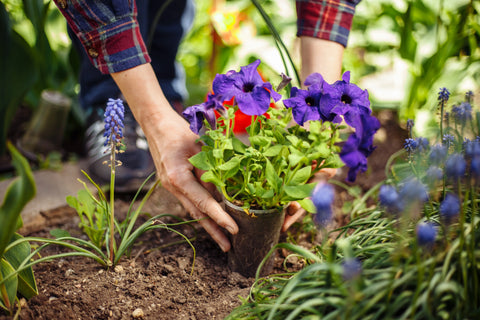Care Guide Variegated False Bird of Paradise
Variegated False Bird of Paradise Care Guide & Tips
False Bird of Paradise plants are beautiful additions to any garden, but they can be a little tricky to care for. In this post, we'll give you some tips on how to take care of your False Bird of Paradise plant and make sure it thrives.
WATER MANAGEMENT
• Birds purchased for indoors can be watered less frequent, but the frequency will depend on the size of the plant, humidity levels and rate of growth.
• One of the most common mistakes in indoor plant care is overwatering. Indoor plants are far more tolerant to underwatering than overwatering.
• It is recommended to monitor your houseplants and water them when they need it, rather than on a schedule.
• The objective when watering plants is to maintain moist soil but never soggy. A moisture meter can reduce guesswork.
• Water requirements may differ for each individual plant so it's best to sample topsoil an inch deep every 3-4 days until you get a sense for each plant's needs.
LIGHTING INSTRUCTIONS
Trees generally require bright light, as an indoor plant it should be placed near a window where the plant can receive the brightest available light, east, south, and west facing windows are the best options, we recommend to rotate the plant occasionally, this will allow the plant to receive bright light from different angles, it can minimize leaf drops from within the canopy and allow the plant to maintain even healthy growth all year round.
HUMIDITY
The Benefits of Misting, Many of our houseplants come from the tropics, where humidity is very high, generally the air in our homes is dry. Misting houseplants is a very simple and effective way to boost humidity, an easy solution to the risk of overwatering your plants, pay attention to the color and texture of the leaves on your plant. Generally Plants with brown or dry leaf tips will benefit from regular misting, preferably in the mornings to allow the foliage to completely dry out during the day.
PLACEMENT AND TEMPERATURE
Selecting the right location for your plant indoors or outdoors is very important, micro climates can affect the health of the plant, make sure the plant does not receive air draft from AC/Heating vents, or warm air from close by freezers, the foliage will dehydrate faster than it can hydrate from moisture in the air, eventually turning brown and dropping, when plants are properly watered and care for and still display signs of wilting or seem sad it may help to relocate the plant to a different area for brighter indirect light. Please note most tropical plants are from the tropics, proper moisture is required for their health and survival, we highly recommend to bring your tropical plants indoors when temperatures are expected below 45s during winter months or above 90 during summer months, extreme weather can severely damage the plant.
REPOTTING
• When repotting, it is recommended to plant between spring and fall.
• Use a potting mix with good drainage for repotting. Cactus mixes are recommended.
• Now is a good time to integrate a slow release fertilizer in the soil when repotting. Apply it based on label instructions.
• Most general all purpose fertilizers can work well for repotting purposes..
• Select a pot 2-3 inches wider than your current pot for repotting purposes . It should have drain holes if possible .Do not remove all the soil from the root ball—this procedure can severely stress or damage the plant .You may remove about an inch of the outer layer of soil as this can stimulate growth .
• Avoid planting too deep in the new pot—the top of the root ball should be level with the top of the soil in the new pot. In event that the new pot does not have drain holes, you must avoid water from accumulating in bottom section of pot —this will damage plant severely One possible solution is to water a fix amount of water, depending on the size of the plant 1 cup of water per gallon of soil maybe sufficient
FERTILIZING
No need to fertilize right away, We fertilize our plants during the production phase with slow release fertilizer which can last an additional 2-3 months supplying residual nutrients to the plant. Once you do decide to fertilize You may use a fertilizer formulated for interior plants, preferably a slow release fertilizer 180 days duration, fertilize during spring or fall base on label instructions.
PRUNING
Pruning is not necessary on white birds.
INSECTS OR DESEASES
Here’s another plus, False Bird of Paradise is not regularly affected by pests. in the event that scale, mealy bugs, or mites are found to affect the plant, they can be controlled by wiping the infested area with a soapy solution, add a few drops of dish soap in a cup of water and wipe off the affected areas with a soft cloth, It can take several intermittent cleanings to rid the plant of the pests.
Horticultural oils can be sprayed directly onto the insects, A second and third treatment, if using oils, will be necessary. Space out the sprays at 3 week intervals to break up the mealybug life cycle. Both of these treatments together will be very effective.


